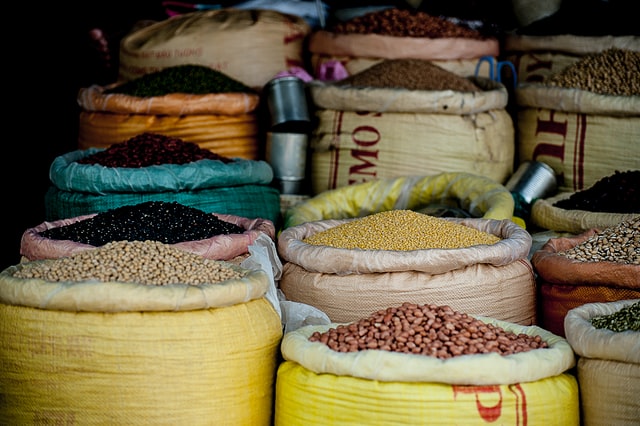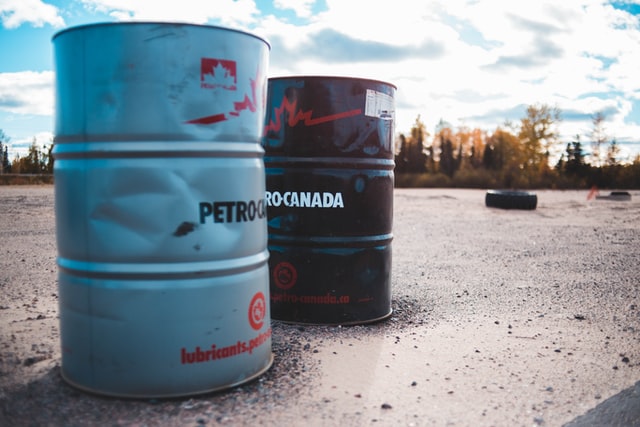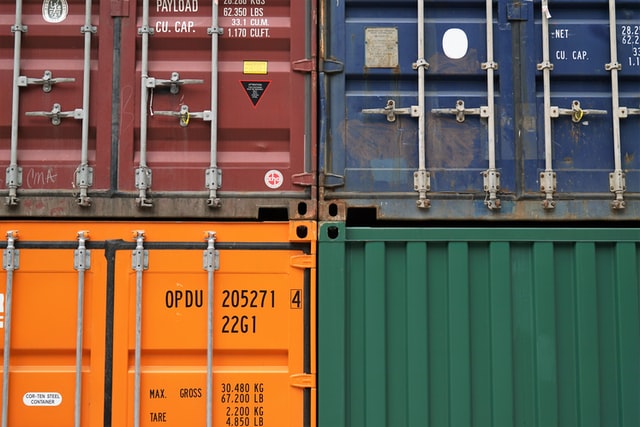Commodity Trading for Dummies
Commodity Trading for Dummies – How to Trade and what is the Commodity Market?
As for introduction in our Commodity Trading for Dummies article, let’s start with what commodities are:
Commodity trading predates the invention of what we know today as money with all early trading involving by necessity, the physical exchange of various goods. This has evolved into what we know refer to as commodities and commodity trading.

In earlier times, the exchange of individual commodities would take place in a physical location, where the buyer and seller would meet in person for the exchange.
While some modern markets still embrace this kind of exchange, most modern investors and traders prefer to use commodity markets for the exchange of commodities.
Commodity exchanges exist around the world with a number of specialized exchanges such as the London Metal Exchange (LME), one of the leading commodity exchanges for industrial metals.
Let’s take a look on actually how to trade commodities!
Types of Commodities to Trade
Before diving into today’s topic: “commodity trading for dummies”, it’s important to understand types of commodities there are on the market.
As our mission now is to explain how this type of trading works, our Commodity Trading for Dummies is here to bring some light over this mass of darkness.
Commodities are divided into two main groups according to commodities trading instruments. These two groups are Hard Commodities which are natural resources produced by either mining or extraction like crude oil or natural gas, and Soft Commodities which are agricultural produce such as coffee or wheat.

The commodities are further classified into four categories:
- Energy: Energy products include Oil (crude oil and heating oil), Gasoline and Natural Gas.
The energy prices of energy commodities in the market are mostly affected by global economic developments that affect the energy producers and the energy contracts for supplying energy-related products. - Metal: Commodities that are categorized in the Metal group are precious metals like gold, platinum, silver and industrial metals copper.
Metal commodities are mostly affected by market volatility, rates of inflation and currency devaluation. - Agricultural Products: Agricultural commodities include products that are produced from the farm like sugar, cotton, wheat, rice, coffee, cocoa, soybeans and corn.
Agricultural commodity prices are affected by environmental factors such as climate change and population growth. - Livestock and Meat: The commodities in this category include all products that come from livestock such as pork bellies, live cattle and lean hogs.
Livestock and meat commodities can be affected by factors such as drought and famine or a widespread health issue.
Most Highly Traded Commodities
For any asset group in a financial market, certain assets are more popular than the rest. As a result, these assets are the ones that traders prefer to trade with because they offer a wide range of opportunities to make a profit or pay off as an investment.
This is no different with commodity trading instruments where the most popular commodities are crude oil, gold, natural gas and silver. Because of their large trading volumes and high volatility, these commodities are also the most valuable.
Read Also: Why is Gold Shining Through?
Commodity Trading for Dummies – How to start?
Before deducing how to Trade Commodities, let’s take a look over the types of markets there are for trading.
There are two types of markets for commodities that are used by traders to buy and sell commodities:
- Spot Markets
Also referred to as cash markets, spot markets work like real-world physical markets where a wide range of instruments, commodities, in this case, are exchanged with cash.
Once the cash is received, the commodity is then immediately delivered to the buyer. - Derivative Markets
Unlike Spots markets where the commodity is delivered as soon as the buyer buys it, derivative markets uses commodity derivatives like futures, forwards and options in trading.

How to trade Commodities and use Derivatives Contracts
- Futures Contract
In futures markets, buyers and sellers set a price for commodity instruments for a specified time in the future and when that time arrives, the buyer is required to buy the commodity at the set price and the seller is required to sell the commodity at the same set price, regardless of the current market price of the commodity.
For example, assuming that there is a seller who wants to sell gold and the price of gold at that moment is $57 per gram. They can either decide to sell the gold at the spot market at that price and deliver it to the buyer, or they can decide to enter into a contract for, let us say, two years.
If they decide to enter into a future contract with a buyer, then they can use a mathematical model to set the Commodities Futures price, in this case, the gold price, to whatever amount they think the gold will be worth in the two years.
If they set the price as $60 per gram, it means that after two years, the seller will be obligated to sell the gold to the buyer at $60 per gram, regardless of whether the current market gold price has increased or decreased.
The same analogy applies to when selling all commodities for example oil, whose oil prices keep fluctuating.
Features of Futures Derivative
- The mathematical model used to set the price in commodity futures contracts is determined by a couple of things, including the spot price, convenience and maturity time, cost of storage and the risk-free rate of return.
- Sometimes, futures derivatives use physical commodity contracts or physical delivery that states that the underlying asset in commodity futures derivative should be delivered on the stated delivery date and not traded out.
- Futures derivatives have no flexible leverage. This means that there are no other options on futures derivatives when it comes to the set price. The buyer and seller must transact the trade with the stipulated price on the contract.
- The Commodity Futures Trading Commission (CFTC) is the regulatory framework that regulates the commodity futures market.
- Forwards Contract
In Forward derivative, two parties enter into a contract where they agree to sell or buy a commodity at a set price in a specified time in the future. Forward contracts are customizable and can be used by traders in hedging against price change.
For example, let us assume that a corn producer wants to sell 4 million bushels of corn in two years. However, because the price of oil corn keeps fluctuating, they are afraid that the price will have dropped in the two years.
The producer then enters into a forward contract with a cereal company to sell the 4 million bushels at $60 per bushel.
This is how the forward contract will work out when two years end:- If the current market price for corn will still be $60 per bushel, neither the company nor producer owe each other anything and the contract is closed.
- If the price will have increased to let us say $70 per bushel, then the producer will owe the company $10 per bushel.
- If the price will have reduced to $50 per barrel, the company will owe the producer $10 per bushel.
- Options Contracts
Unlike futures options have flexibility leverages where the two parties can have an agreement to buy or sell the commodity before the expiration date, or the set future date reaches. The price of the commodity, which is referred to as strike price, is preset.
There are two types of contracts – the call options and put options. Traders can buy either of these contracts to speculate on the stock markets and their options on stocks by looking at the direction of stocks or stock commodity indices. They can also sell either of the contracts to generate income.
Commodity Trading for dummies – CONCLUSION!
Commodity trading is an integral part of any financial market not only because it balances out the economic sectors in the market but also because it has tight and competitive spreads that offer many trading opportunities to traders.
However, like any other financial instrument in the daily market, it is challenging to be a successful trader or investor in commodity trading. One tip that traders can use before trading in a commodity is to first do technical and fundamental analysis.
That way, they can get an accurate economic picture about the economic indicators in the commodity-producing companies that they can use to come up with the best commodity trading strategies or to choose the most profitable types of investments and investment strategy.
Another tip for a commodity trader is to choose a reliable brokerage company that offers cutting-edge commodity trading services and support.
tixee, which is a Licensed and Regulated Forex and CFD broker, is one such company.
Here are three reasons why you should create an account with tixee and start trading any commodities trading instrument of your choice:
- It offers its account holders unlimited access to add-ons, including the Trading Central Technical Analysis and Trader Education resources that will make traders better at trading.
- It offers a fair and transparent trading environment that is built on mutual trust and respect.
- As one of the major commodity trading platforms, tixee has access to a wide range of commodity in the commodity sector that create many trading opportunities.
Frequently Asked Questions
What is the minimum trade size for Gold/Silver/Platinum/Palladium?
0.01 of a standard lot.
What is Exchange-Traded Fund (ETF)?
An ETF is a type of commodity index funds that track the movement of market prices of the various commodity from experts charts but it can still be traded like a regular stock. ETFs are created as a pooled investment vehicle in which every ETFs pool investor invests some funds and the pool investor money is then collected and invested together to create a diversified portfolio for the investors.
What is the difference between Mutual Funds and ETF?
The purpose of a mutual fund is to generate returns and income for the investors by actively trading the assets in the fund while the purpose of the ETF is to track a specific market index and they are traded like stocks.
What is a Margin Rate?
It refers to the fee that brokers charge above their normal rate or the interest that brokers get when the traders stay with a purchased asset overnight.
What is Largest Commodity Exchange in the world?
The Largest derivatives exchanges in the world the National Stock Exchange of India.
What is commodity spread trading?
It refers to a situation where the trader will take opposite positions in the same market when trading commodities to increase their chances of profits.
What are the different types of commodity segments in the market?
The two prevalent type of segments are Over-The-Counter (OTC) and ETF.
Can you make profits through dividends?
Yes. When you reinvest your dividend income, the returns of your investment can increase significantly.
Read Also: How to Trade Commodities with tixee
